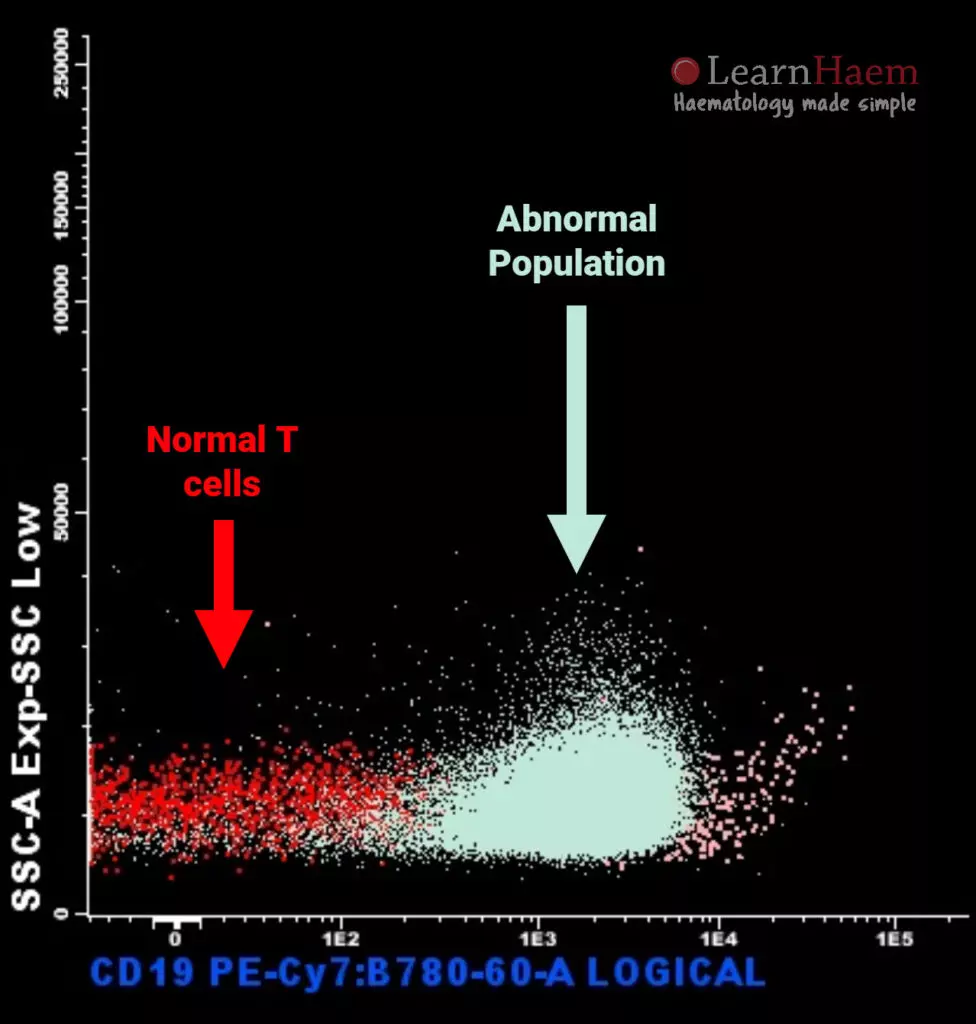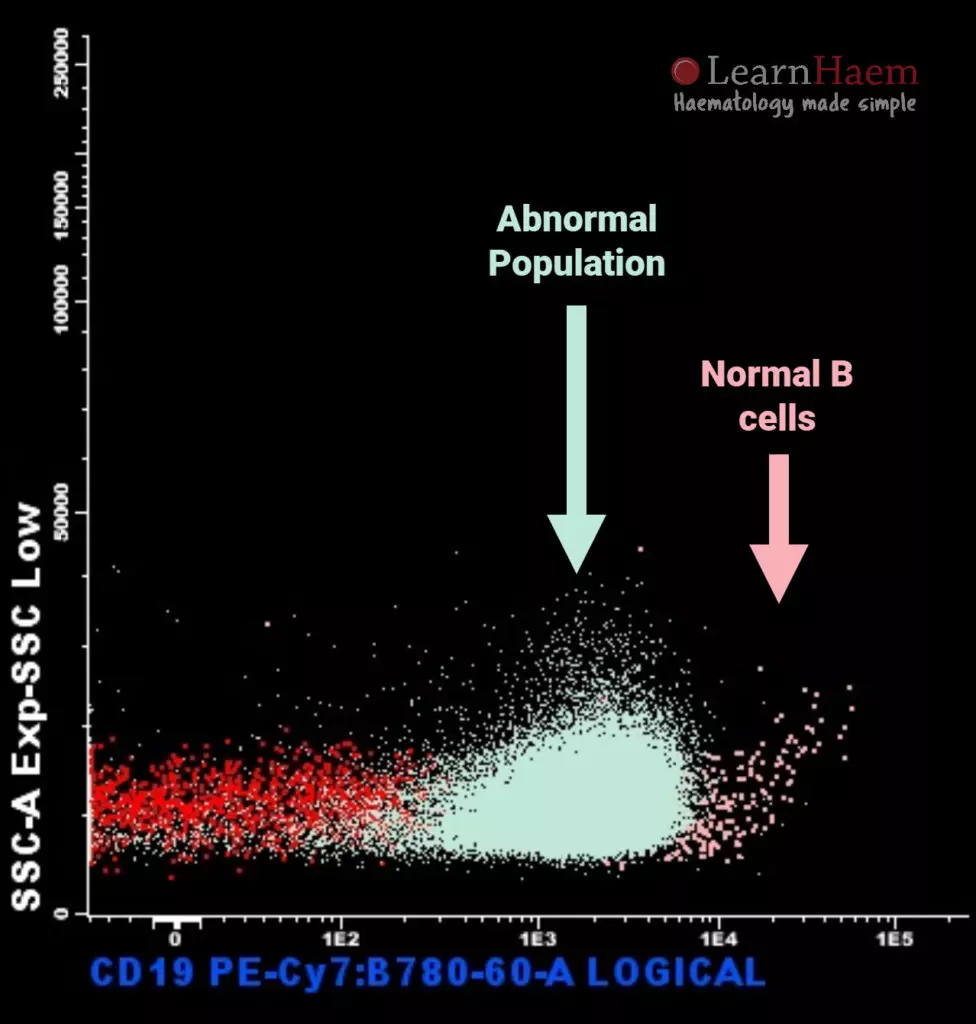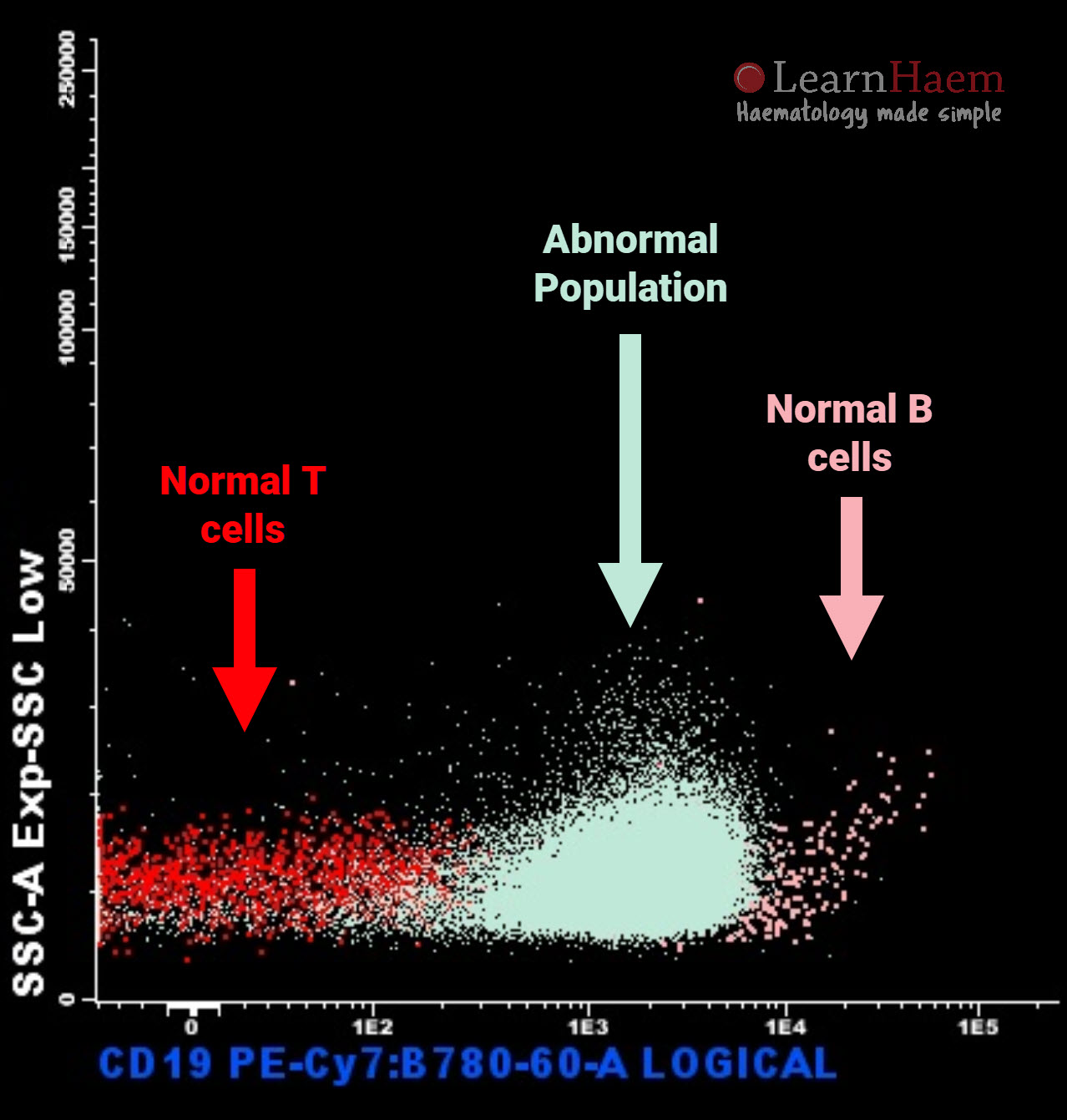In flow cytometry, normal cells provide intrinsic controls against which antigen expression and staining intensity is measured. The 2006 Bethesda Consensus outlined standardized criteria by which staining intensity should be reported.
Antibody expression / distribution
- Positive: antigens expressed (relative to a negative control)
- Negative: antigens not expressed
- Partial: antigens expressed in a subset of the population in question

Staining Intensity
- Dim: positive with a lower intensity than a positive population
- Bright: positive with a higher intensity than a positive population
- Heterogenous: variable expression or a spectrum of intensity (as opposed to a tight, uniform cluster of events)



Very helphull